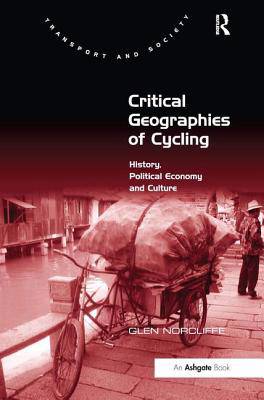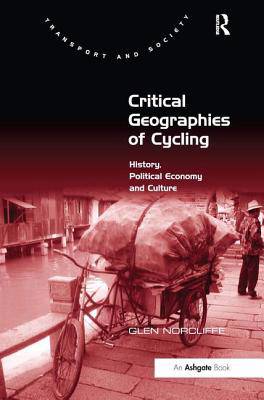
- Afhalen na 1 uur in een winkel met voorraad
- Gratis thuislevering in België vanaf € 30
- Ruim aanbod met 7 miljoen producten
- Afhalen na 1 uur in een winkel met voorraad
- Gratis thuislevering in België vanaf € 30
- Ruim aanbod met 7 miljoen producten
Zoeken
€ 195,95
+ 391 punten
Uitvoering
Omschrijving
Examining cycling from a range of geographical perspectives, this book uses historical and contemporary case studies to look at the history, politics, economy and culture of cycling. Pursuing a post-structural position in viewing understandings of the bicycle as contingent upon time and place, author Glen Norcliffe argues for the need for widespread processes such as gendered use of the bicycle, the Cyclists' Rights Movement, and the globalization of bicycle-making to be interpreted in different ways in different settings. With this in mind, the essays in the book are divided into two sections: relational aspects are examined as Spaces of Cycling which treats technological development, innovation, and the location of production and trade of cycles, while Places of Cycling interprets specific sites of consumption - the streets of the city, in the cycling clubs, among men and women, and at the trade show. Written from a geographer's integrative perspective to offer a broad understanding of cycling, this book will also be of interest to other social scientists in urban studies, cultural studies, technology and society, sociology, history and environmental planning.
Specificaties
Betrokkenen
- Auteur(s):
- Uitgeverij:
Inhoud
- Aantal bladzijden:
- 290
- Taal:
- Engels
- Reeks:
Eigenschappen
- Productcode (EAN):
- 9781472439116
- Verschijningsdatum:
- 28/06/2015
- Uitvoering:
- Hardcover
- Formaat:
- Genaaid
- Afmetingen:
- 156 mm x 233 mm
- Gewicht:
- 579 g

Alleen bij Standaard Boekhandel
+ 391 punten op je klantenkaart van Standaard Boekhandel
Beoordelingen
We publiceren alleen reviews die voldoen aan de voorwaarden voor reviews. Bekijk onze voorwaarden voor reviews.











